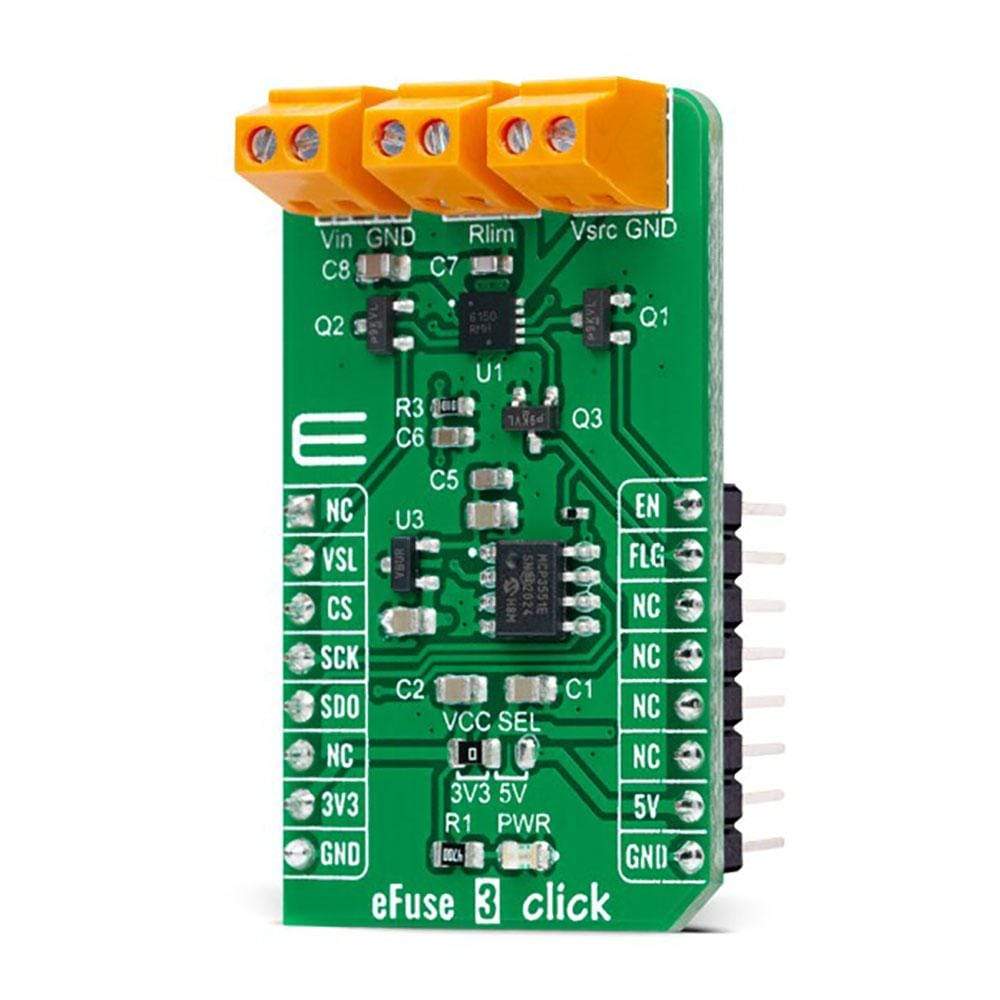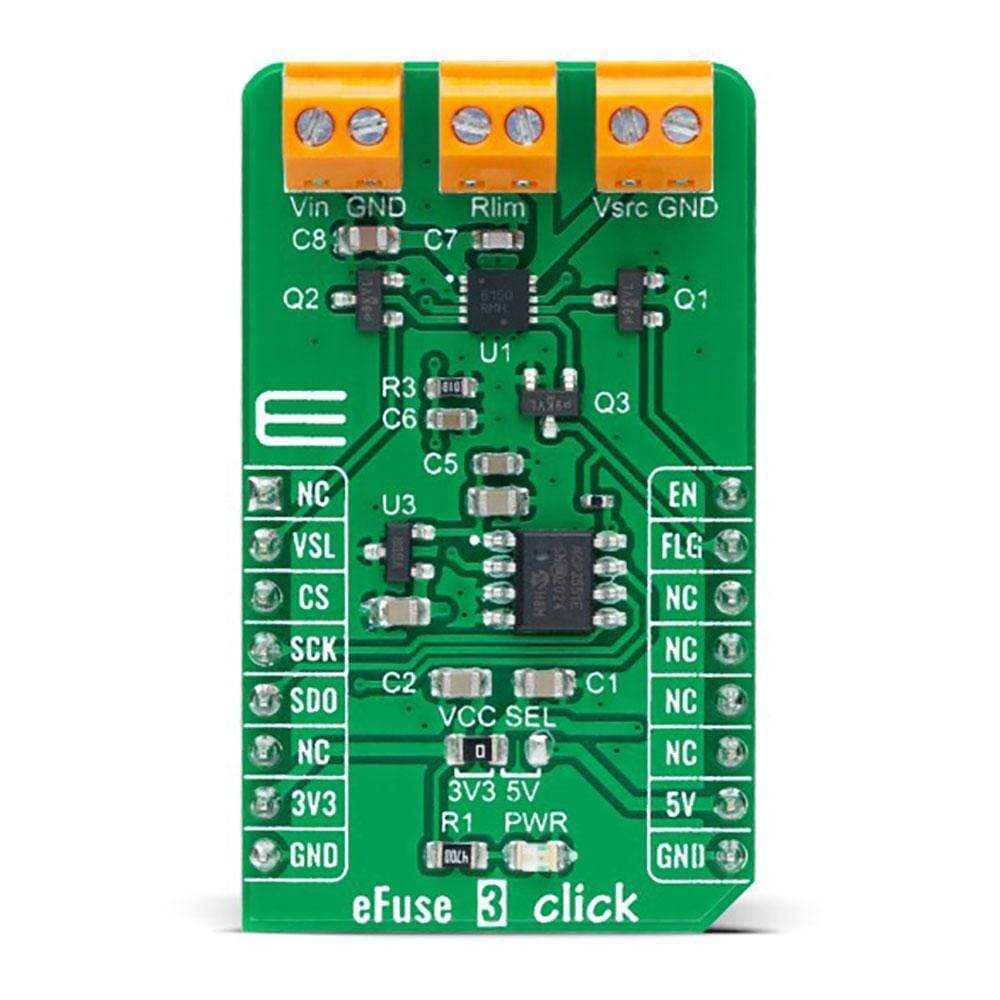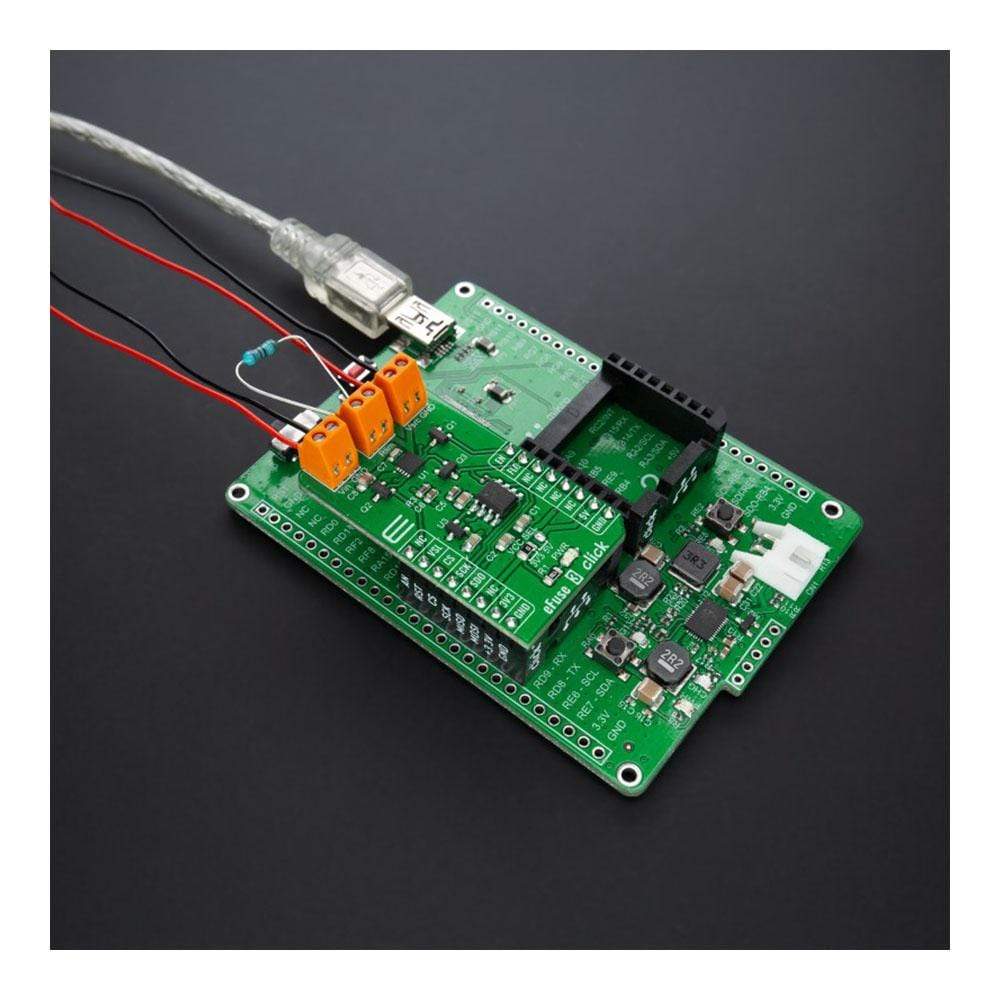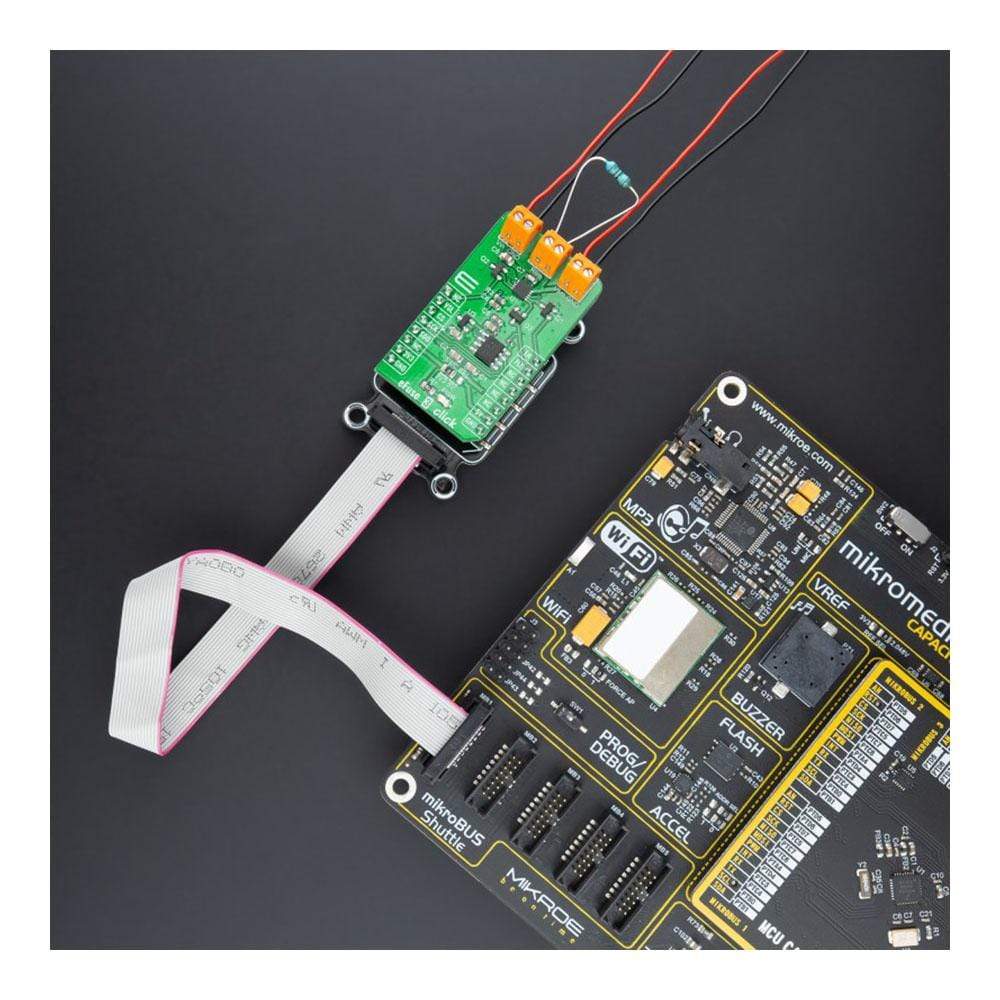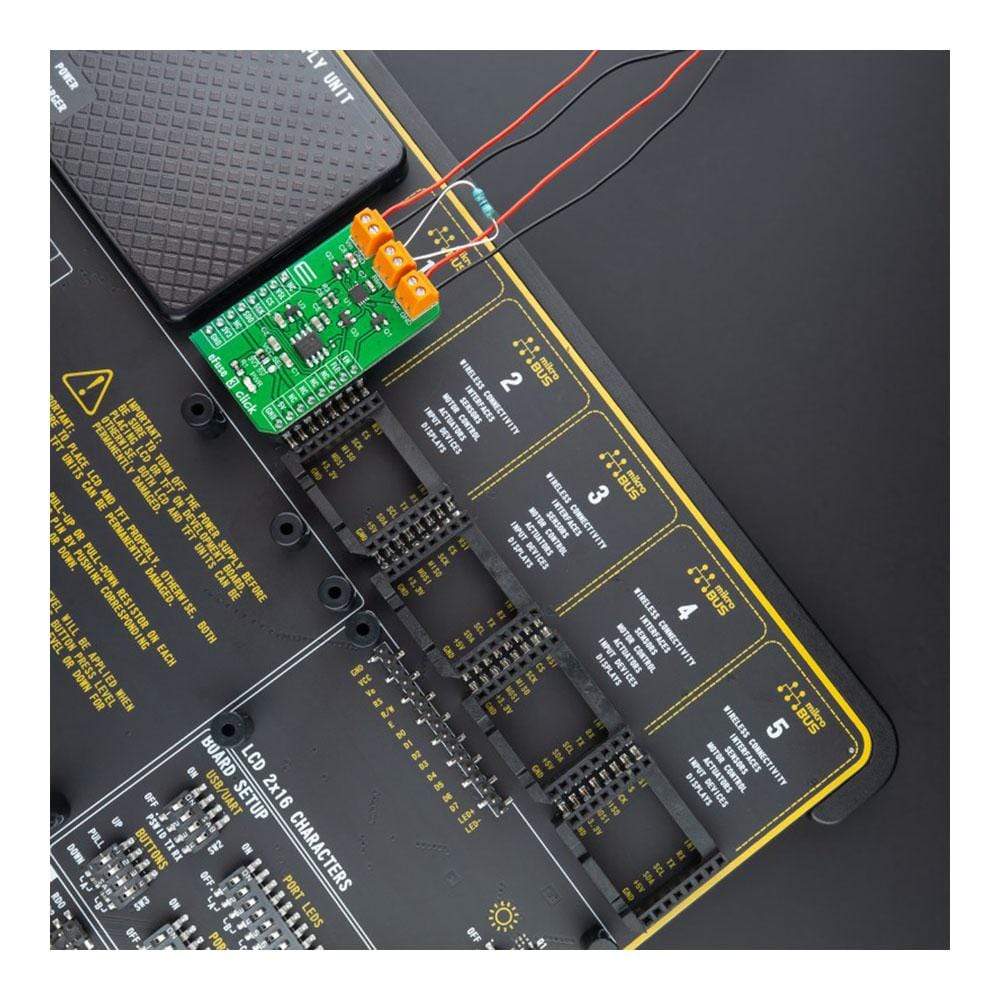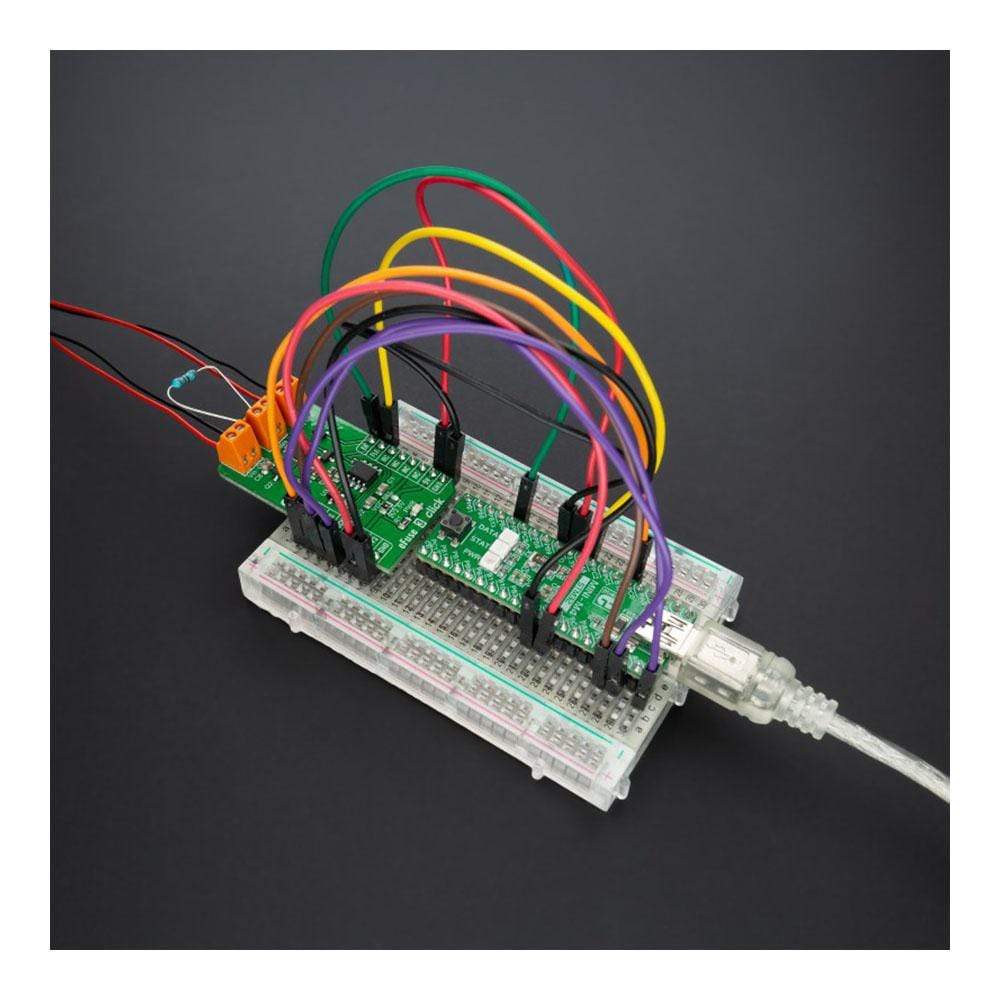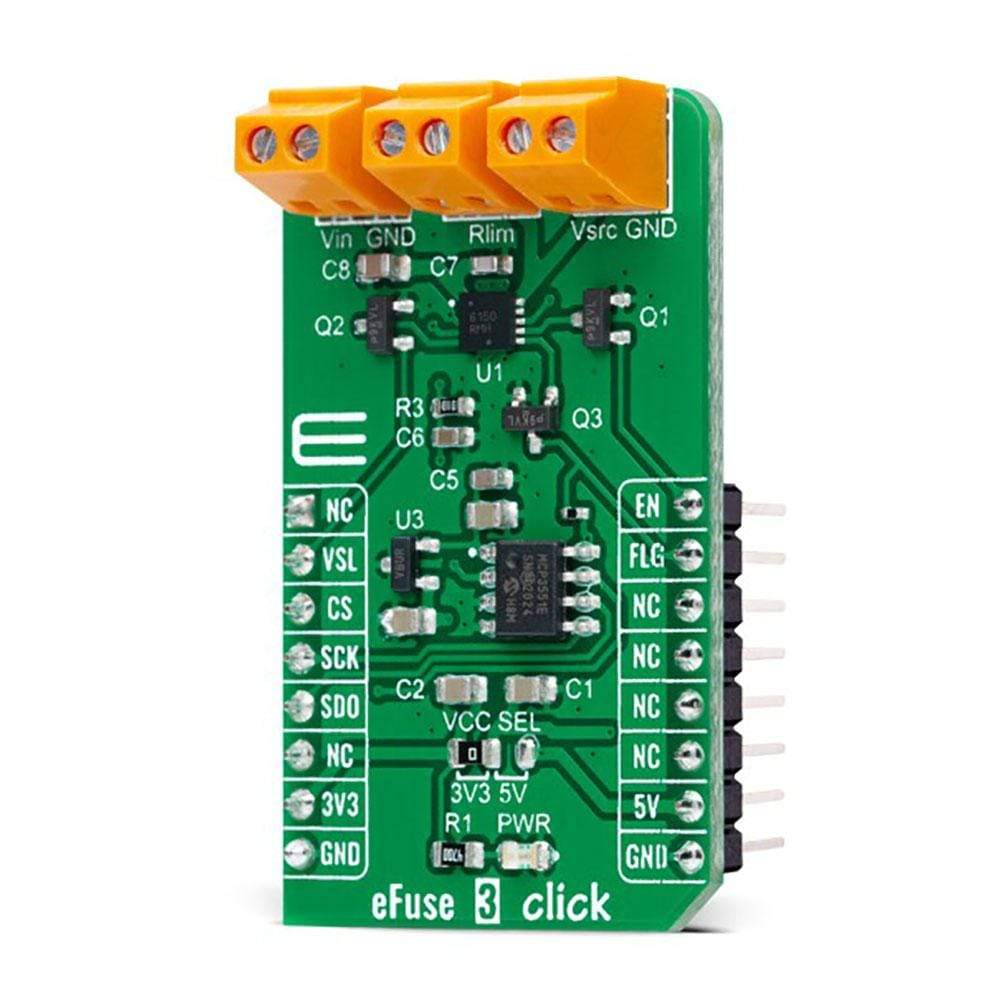
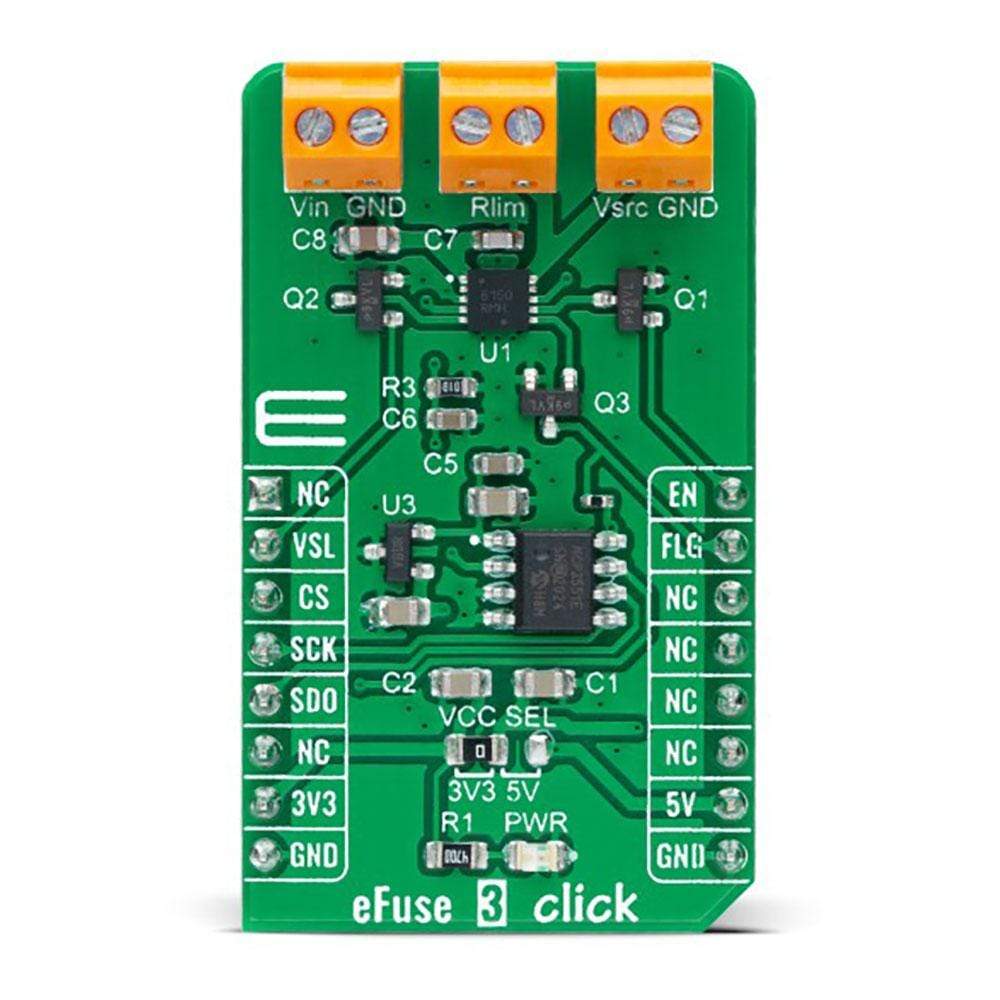
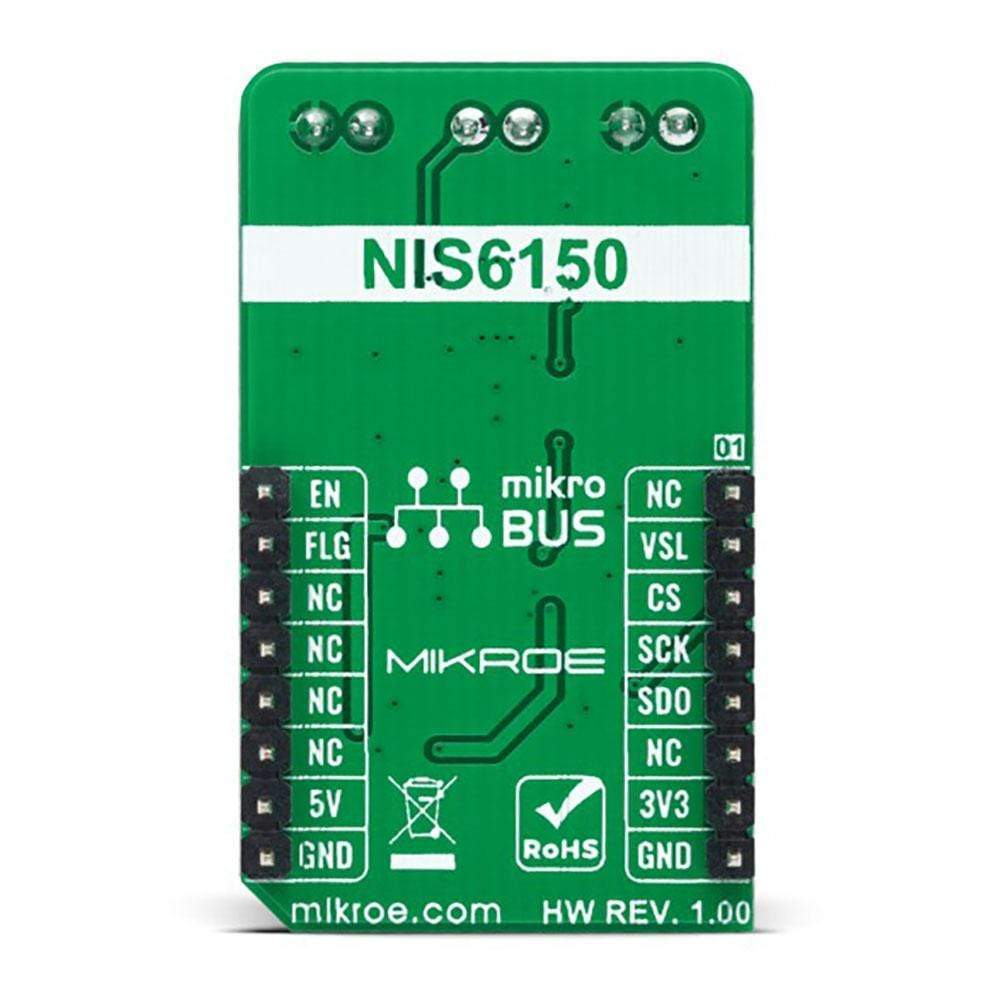
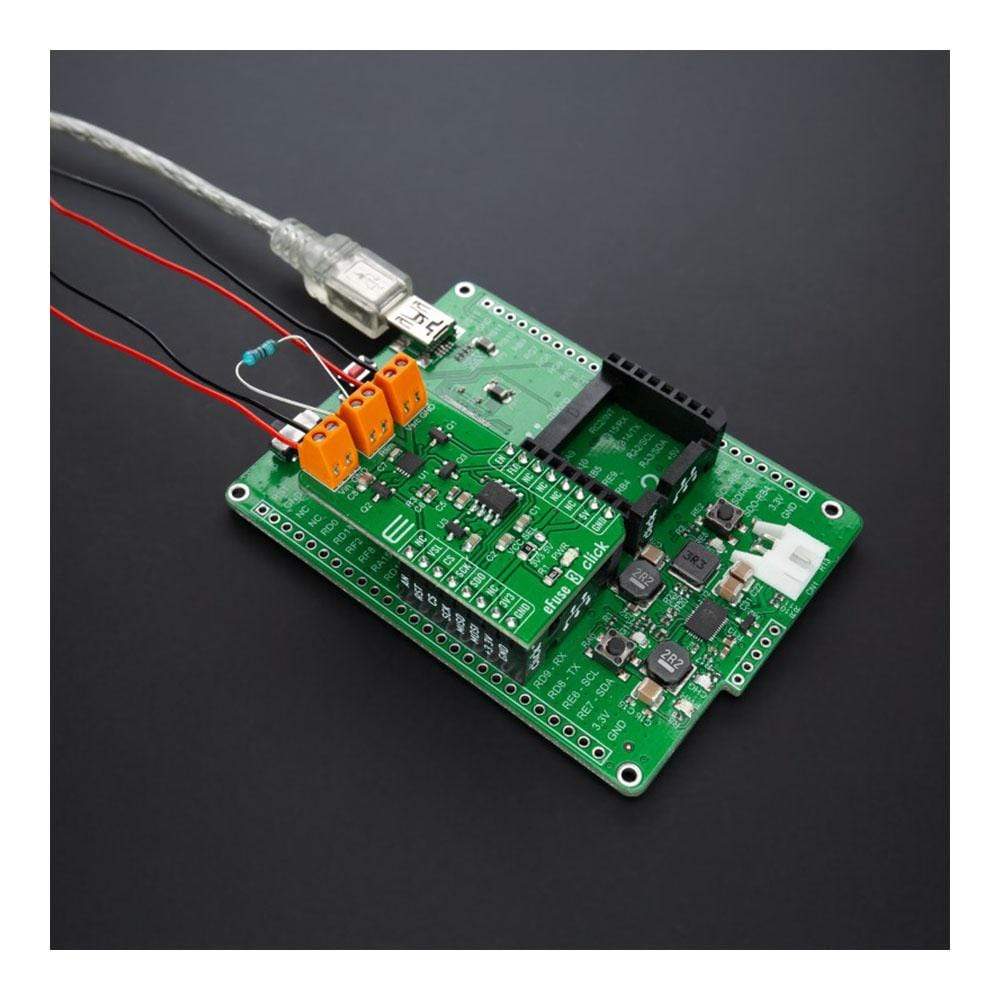
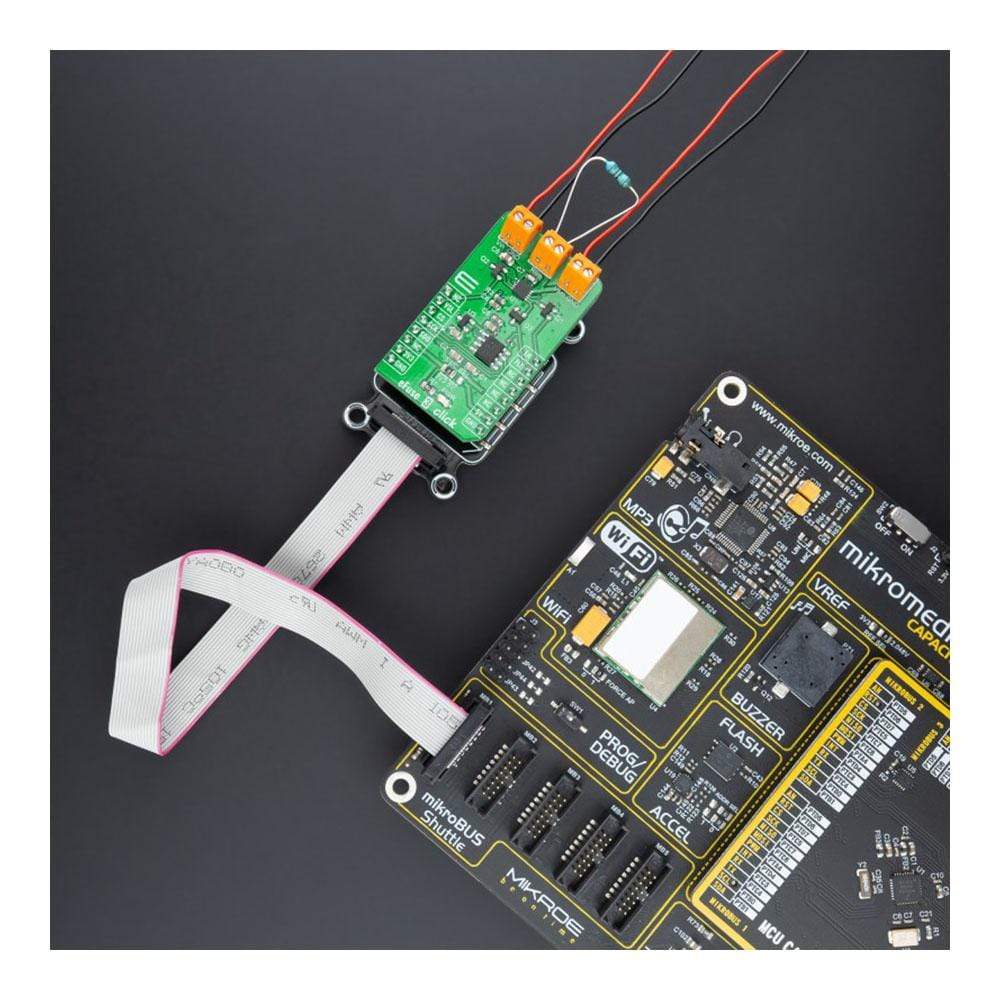
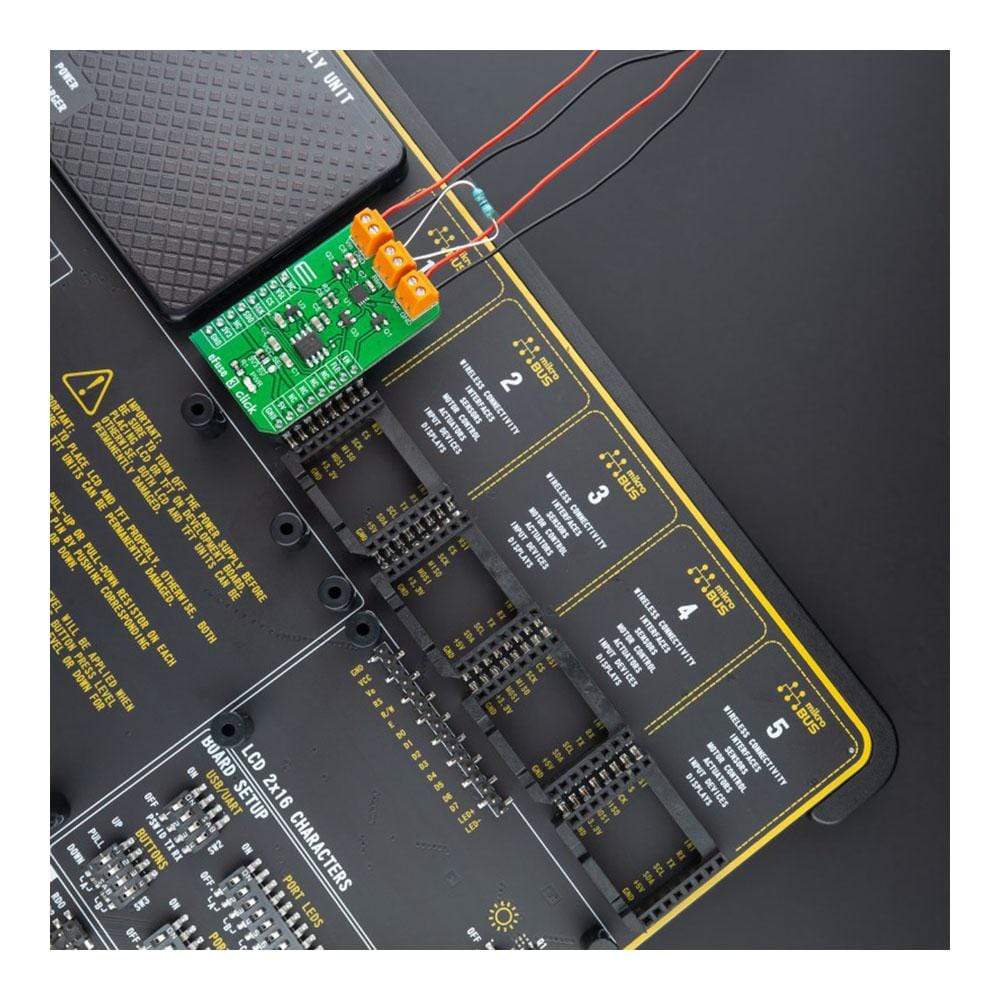
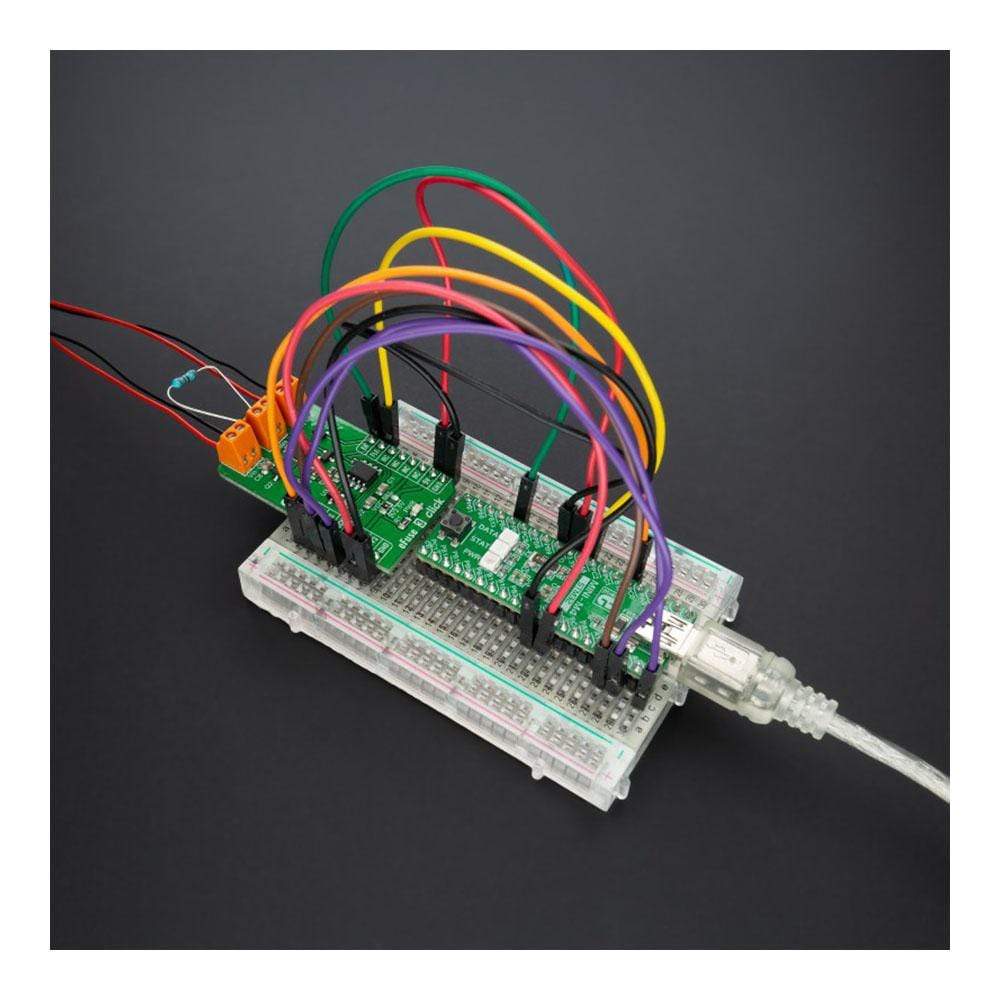
Overview
The eFuse 3 Click Board™ is a compact add-on board that contains an electronic eFuse. This board features the NIS6150, a resettable fuse that can significantly enhance the reliability of a USB application from both catastrophic and shutdown failures from ON Semiconductor. It is designed to buffer the load device from the excessive input voltage, which can damage sensitive circuits and protect the input side from reverse currents. It includes an over-voltage clamp circuit that limits the output voltage during transients but doesn’t shut the unit down, allowing the load circuit to continue its operation. This Click Board™ is suitable for automotive infotainment, overcurrent surge protection, and robust resettable fault protection.
The eFuse 3 Click Board™ is supported by a mikroSDK compliant library, which includes functions that simplify software development. This Click Board™ comes as a fully tested product, ready to be used on a system equipped with the mikroBUS™ socket.
Downloads
Der eFuse 3 Click Board™ ist eine kompakte Zusatzplatine, die eine elektronische eFuse enthält. Diese Platine verfügt über die NIS6150, eine rücksetzbare Sicherung, die die Zuverlässigkeit einer USB-Anwendung bei katastrophalen Fehlern und Abschaltfehlern von ON Semiconductor erheblich verbessern kann. Sie wurde entwickelt, um das Lastgerät vor übermäßiger Eingangsspannung zu schützen, die empfindliche Schaltkreise beschädigen kann, und um die Eingangsseite vor Rückströmen zu schützen. Sie enthält eine Überspannungsklemmschaltung, die die Ausgangsspannung während Transienten begrenzt, das Gerät jedoch nicht abschaltet, sodass der Lastkreis seinen Betrieb fortsetzen kann. Diese Click Board™ eignet sich für Infotainment im Auto, Überstromschutz und robusten rücksetzbaren Fehlerschutz.
Das eFuse 3 Click Board™ wird durch eine mikroSDK-kompatible Bibliothek unterstützt, die Funktionen enthält, die die Softwareentwicklung vereinfachen. Dieses Click Board™ wird als vollständig getestetes Produkt geliefert und ist bereit für den Einsatz auf einem System, das mit der mikroBUS™-Buchse ausgestattet ist.
| General Information | |
|---|---|
Part Number (SKU) |
MIKROE-4630
|
Manufacturer |
|
| Physical and Mechanical | |
Weight |
0.02 kg
|
| Other | |
Country of Origin |
|
HS Code Customs Tariff code
|
|
EAN |
8606027382499
|
Warranty |
|
Frequently Asked Questions
Have a Question?
Be the first to ask a question about this.

